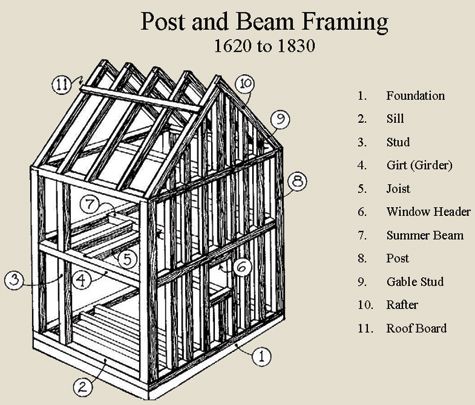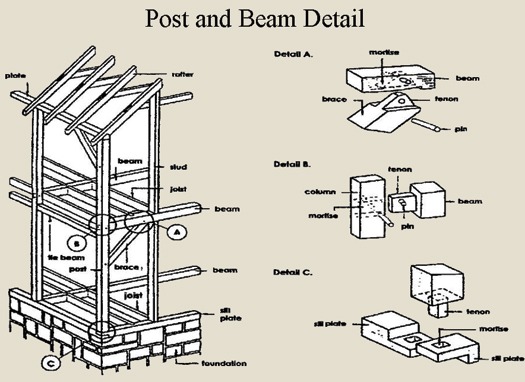Insuring Antique & Historic Homes
We hear it all the time from our customers: “why is the replacement coverage on my home so high”? “I can’t sell it for anything near that amount”! The answer lies with the relationship between the insurance carrier and your builder. The policy you buy has little to do with retail market of a home, as your insurance policy is a contract to restore your home after a loss. So what do the insurance carriers and builders look at to come up with these arguably crazy numbers?
Over the past several hundred years and continuing today, home building techniques continue to evolve. Yet it is the older homes where we in the insurance industry find some of the biggest challenges. Determining how much money a homeowner needs to rebuild or repair their home really takes skill and knowledge. Learning and understanding the building techniques during a home’s construction period is one important consideration. The other is being aware of the materials utilized during the period and finding a craftsman or trade that possess the “skill set” to work on the home after a loss is another. The manner in which a home was constructed can explain the difficulty in renovating and repairing a home. Listed below a sample of some of the more common construction techniques utilized over the last several hundred years. The various techniques have a direct relationship to the money that is needed to make the repairs or replace the home in today market.
As you may have seen yourself over the years many “antique” homes truly have various charming and unique features from the period, such as; stone foundations, built-in cabinetry, plaster walls and wood wall paneling and numerous fireplaces. Aside from the many different interior features the framing also varied over time. Early on from around 1620 to 1830 the most common framing technique was that of Post and Beam. Not only was Post and Beam common for the period so was the lumber that was used during that time. When looking closer you will see the materials utilized in the construction (beams, posts and framing members) were larger and typically custom made for the home. Than around 1830 we begin to see a change in framing techniques towards a migration to what is now referred to as Balloon Framing. Utilizing lighter and more readily available materials that weren’t necessarily “custom made” the craftsman could assemble the materials rather easily greatly reducing the construction time. Then around 1930 we see yet another change to a framing Technique, it was called Platform Framing. Now trades and contractors could purchase materials that truly were considered mass produced. The materials were shipped from all over the country, again reducing the need for “handmade” building materials further lowering costs. The following three diagrams are a good depiction of the framing techniques of the time.
Post & Beam Framing


Balloon Framing


Platform Framing


Interesting enough knowing how to disassemble a home prior to making repairs is an important consideration as it relates to the overall cost of the repairs themselves. Why disassembly and the type of materials are so important is that most losses only affect a certain portion of the home and not the entire home. And if you ever received an estimate for renovations you know the cost to renovate is always much higher than that of building new construction. Not having to “work around” existing materials saves both time and money. Another important consideration is finding materials that resemble what was used originally and along with a skilled tradesman and/or contractor who honestly knows how to work on the home given the various methods of construction With any business or trade it takes time and a particular skill to work with unique construction projects. So what is “unique” about an older home? It’s the materials used to construct them. For example, older homes used what is call “true-dimension” or larger dimension lumber. Matching the dimension and the species of lumber (butternut, oak, etc.) is a vital part of making the needed repairs after a loss.
Why are older homes more expensive to fix?
Older homes primarily constructed the walls of Plaster and Lath (small pieces of wood) which is significantly more expensive than sheetrock.
And Our Future Homes?

Architectural designs utilized in today’s homes are getting more creative and that means they can be much more elaborate in their design and building techniques going forward. With technology, the architect is allowing homeowners the opportunity to put their personal touch on the design of the home. This also means the structural design themselves can be much more complicated. With regards to the materials utilized in building of a home, the global market has allowed the builder and homeowner alike the ability to buy products from all over the world at the click of a button. The next concern is rapidly changing city and town code changes. Given the expanding product lines available to the consumer the building code constantly is undergoing changes to accommodate the new products and innovations. This could also mean a product that complied with code years earlier, may no longer be permitted at the time of the loss. When a loss happens, the homeowners and the insurer alike need to be able to contemplate the cost of updating older products and materials with one that meet today code demands. All of this; new building techniques, innovative materials and changes to code, are major factors when evaluating what it needed to rebuild or replace your home in today’s market.
When it comes to insuring what is likely your largest assets, Nicholas / Tobin Insurance provides you with the peace of mind you both want and need. Should that day come when you need to utilize your insurance coverage, rest assured Nicholas / Tobin Insurance is there to assist you and your friends. We have an extensive list of trades and contractors that can assist you when you need it most. Purchasing homeowners insurance in Litchfield County, Nicholas / Tobin Insurance is the true insurance expert in the market place.
